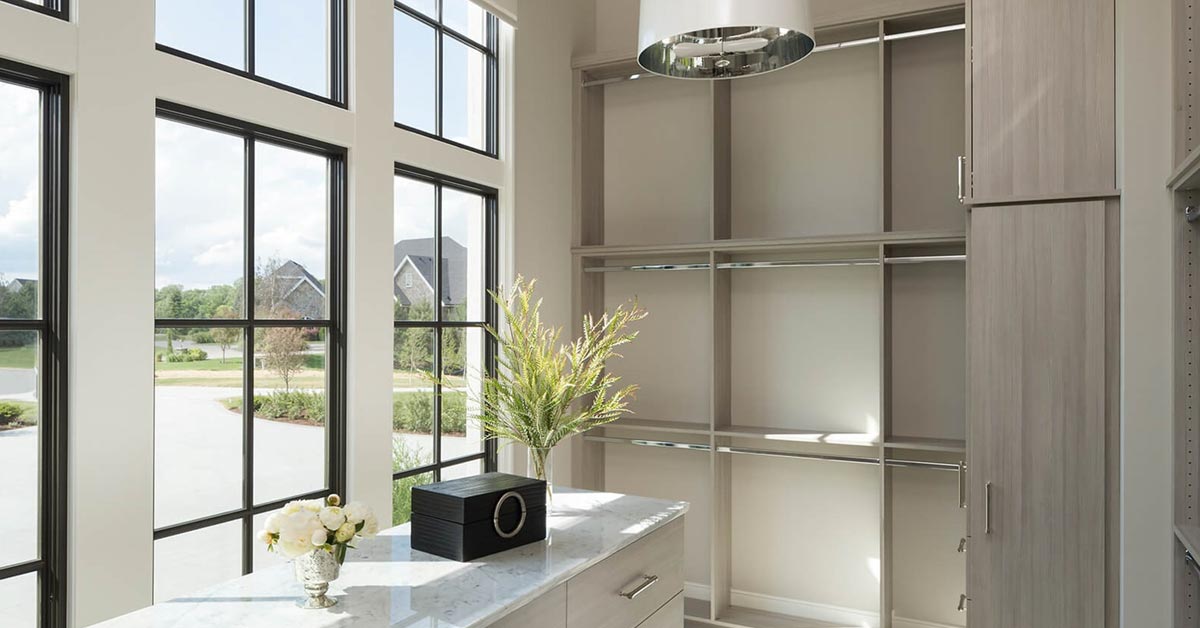
15 Jun 6 Ways to Incorporate Natural Light in Your Home
Natural light does so much for your home’s interior. It makes any space appear larger and less confining, it reflects the colors in your decor in the best way and it enhances the lives of you, your family and of those who you invite into your home. In fact, adding more natural light to your environment is a design tool that has so many benefits. Flooding your space with natural light:
- Improves your mood
- Makes you more productive
- Lowers energy bills
- Helps you sleep better
- Increases your home’s resale value
There are many ways in which natural light’s superpowers enhance your life and your home. That’s why, in your new custom designed home you should try to bring as much natural light in as possible. Here we offer ways you can incorporate natural light into your home.
One of the best design elements, no matter your style or design, is natural light. It provides a quality that simply can’t be replicated. Here are six ideas you can use to incorporate natural light into your custom home.
1. Windows
The obvious way to bring more light on the subject is by adding more windows to your custom home design. Consider oversized windows above the kitchen sink or a wall of windows to showcase your most spectacular view.
Many modern kitchen designs are doing away with upper cabinets and offering more storage through other options such as a walk-in pantry. Why not take the area once reserved for upper cabinets and create a bank of windows? Your kitchen will be even more popular with family and guests.
One of the most popular trends in window walls these days, even in our area of the country, is a folding window wall that opens onto your outdoor entertaining space. Highly insulating glass panels let in light and open to extend your gathering space for parties and family get togethers.
2. Clerestory Windows
Clerestory windows are those that are above the sight line. This design element isn’t exactly new. The temples in ancient Egypt used these upper windows as a source of natural light. Today more and more homeowners use clerestories to flood the room with light, These windows, due to their placement, typically well above eye level, create an interior element that’s open and airy with ambient light.
When your clerestories open air circulates above the living space to cool things down much more rapidly. Some homeowners use a combination of clerestory and traditional windows to prevent a claustrophobic feeling from enveloping the room.
3. Skylights Flood the Room with Natural Light
Any window you install in your roof is considered a skylight. The amount of light that your skylight brings in is influenced by its placement. Skylights had a good run back in the late 20th century but fell out of favor with homeowners in the Quad Cities due to their reputation for developing leaks and their less than durable nature in inclement weather.
Thankfully today’s skylights are back and better than ever. Thanks to improvements in window technology skylights are much more durable, energy efficient and, when installed properly, completely leak-proof.
While a multi-story house limits just where you can install a skylight they are a wonderful option for bedrooms, bathrooms, and above the stairs.
4. Solar Tubes/Sun Tunnels
When your space isn’t well-suited for a full skylight consider a solar tube instead. These tubes provide an amazing amount of natural light in smaller rooms or in rooms with slanted ceilings that offer little space for a skylight. A sun tunnel is also a great way to bring natural light into the living spaces of a multi-story home.
5. Include Natural Light in Your Floor Plan
Design your custom home around the available natural light. Use an open floor plan with unobstructed windows and minimal use of walls. This allows natural light to flow throughout your home. Plan to arrange areas of your home that may require less natural light away from the main living areas. These would include storage areas and utility, mud or laundry room.
If you plan a covered outdoor entertaining space be mindful of where you’ll place it. You don’t want to prevent the flow of natural light.
6. Design Features Incorporating Natural Light
Incorporate light reflecting colors and types of paint. White, off-white, light grey and ecru are popular colors because they reflect light back into the room. Choose fabrics and flooring that keep the light and airy theme going but be sure they have UV protection, even with todays more efficient windows.
There’s a trend toward uncovered windows however many homeowners still prefer their window treatments. Keep the light shining with the use of sheer fabrics and light-diffusing blinds. For those windows that let in too much light and glare depending on time of day/year you can use factory-glazed window glass.
Let Us Shed Some Light on Your Home Design
In order to get the most from natural light work with our professional designers at Seiffert Home Design. Our experienced professionals will help you design the home of your dreams. Contact Seiffert Home Design today and let’s shed some light on your ideas.


